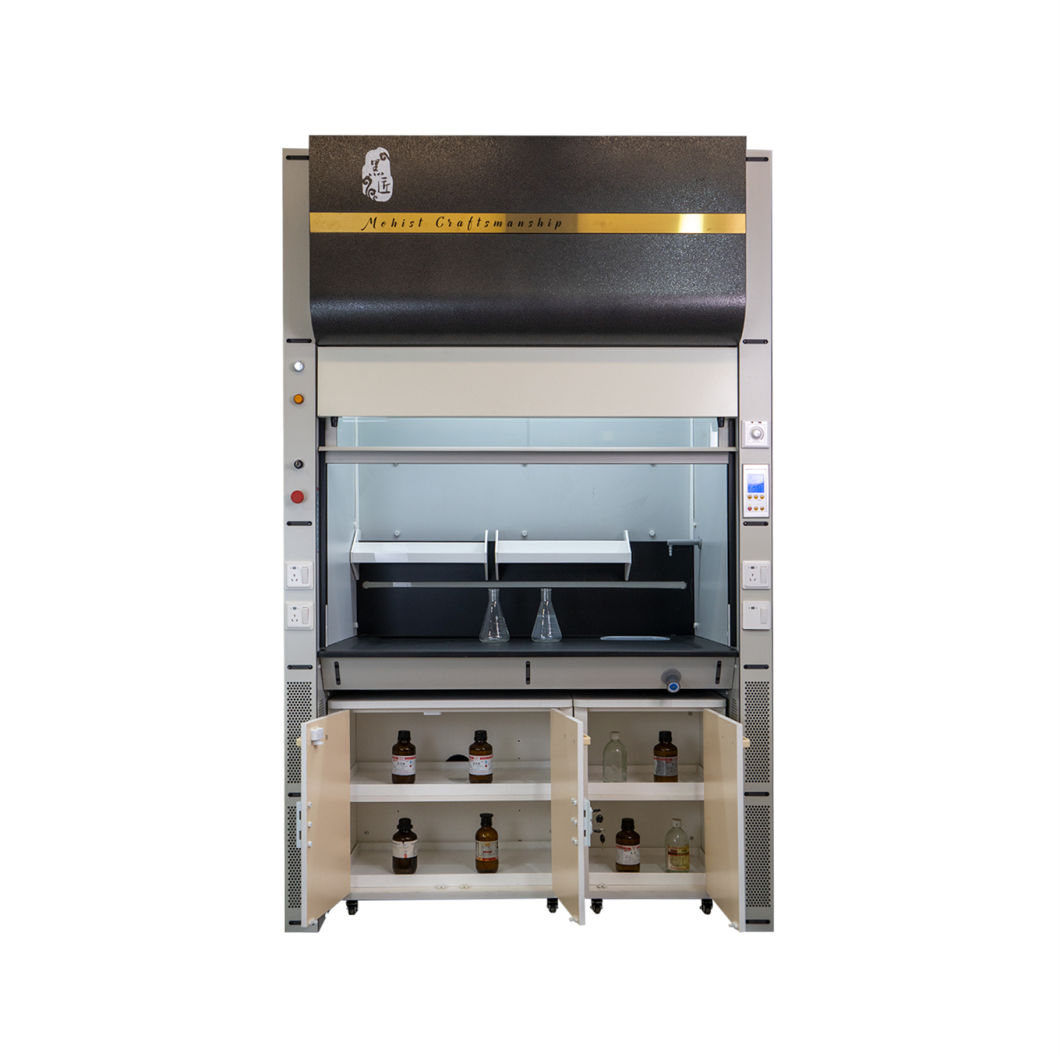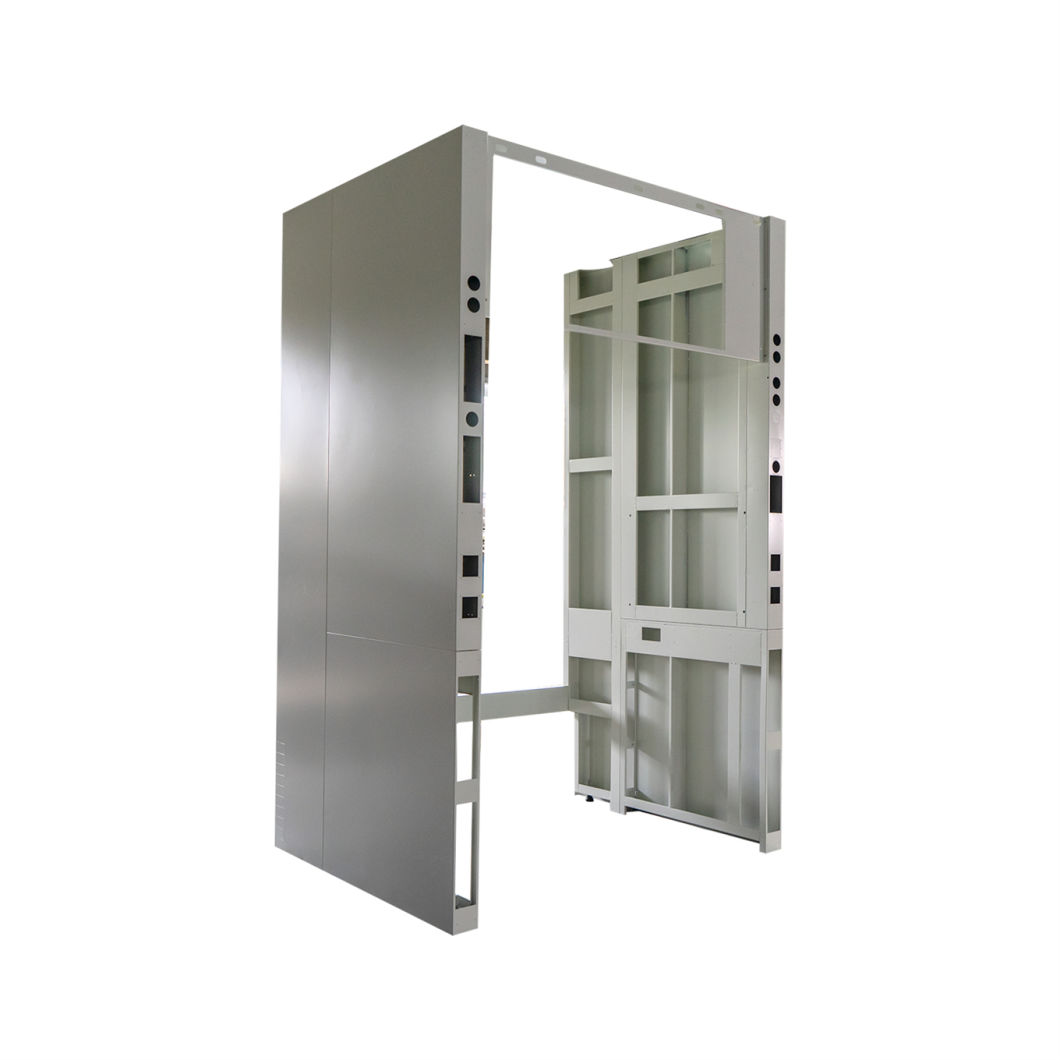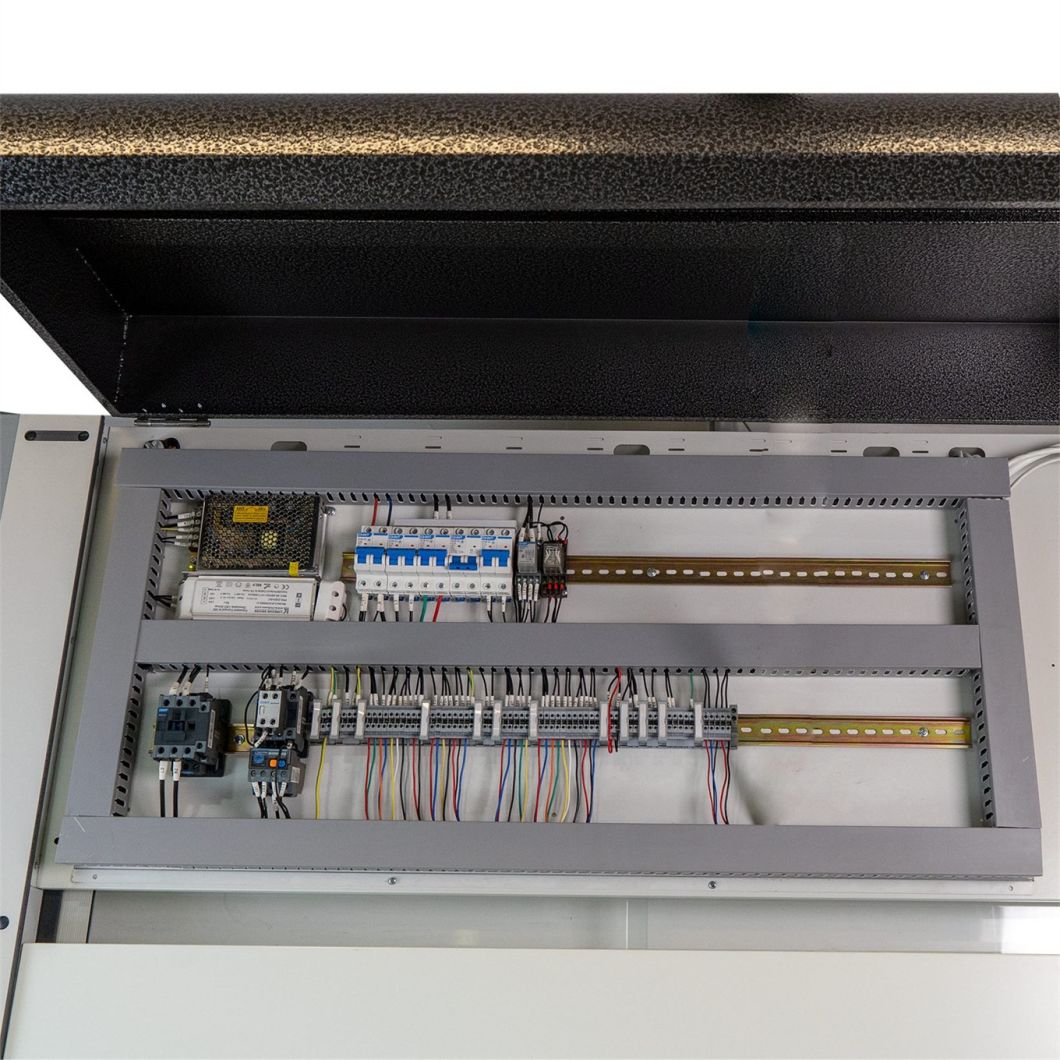Chengdu Ample Import And Export Co., Ltd. |
|
Fume hoods exhaust toxic, flammable, noxious, or hazardous fumes and vapors by capturing, diluting, and
removing these materials. Fume hoods also provide physical
protection against fire, spills, and explosion. Laboratory fume
hoods only protect users when they are used properly and are working correctly. A fume
hood is designed to protect the user and room occupants from
exposure to vapors, aerosols, toxic materials, odorous, and other harmful substances. Fume hoods provide the best protection
when the fume hood sash is in the closed position. All chemical
fume hoods must be ducted to the outside of the building.
Constant Air Volume Hoods (CAV)
CAV fume hood exhausts the same amount of air all the time,
regardless of sash position. As the sash is lowered and raised, the
velocity at the face of the hood changes. The opening is marked
where the correct face velocity occurs.
Variable air volume hoods (VAV)
VAV hoods modulate air flow based on sash height and maintain 100
ft/min face velocity at all sash heights. They are equipped
with a monitor that indicates whether the hood is in the "standard
operation" or "standby operation" mode. The fume hood monitor also
has an "emergency purge" button, which increases airflow through
the hood to maximum and can be used to quickly remove air
contaminates from the lab. VAV fume hoods are equipped with
flow sensors that activate an audible alarm when malfunctions
occur.
| Model Specification | WJ-1500A | WJ-1500B | WJ-1800A | WJ-1800B |
| External dimensions of equipment(mm) | 1500(W)*1205 (D) *2400 (H) | 1800(W)*1205 (D) *2400 (H) | ||
| Dimension of works pace (mm) | 1260(W1)*780(D1) *1100 (H1) | 1560(W1)*780(D1) *1100 (H1) | ||
| Panel material | 20+6mm thick butterfly ceramics | |||
| Material of internal lining board | 5mm thick ceramic fiber board | |||
| Diversion structure | Lower air return | |||
| Control system | Button control panel (LCD panel) | |||
| PH value control | The medium is alkaline water solution; manual monitoring, and manual control through acid pump and alkali pump. | |||
| Input power | Three-phase five-wire 380V/50A | |||
| Current for air fan | Not over 2.8A(380V or 220V can be directly connected) | |||
| Maximum load of socket | 12 KW(total of 4 sockets) | |||
| Water tap | 1 set (remote control valve + water nozzle) | No | 1 set (remote control valve + water nozzle) | No |
| Water discharge way | Magnetic chemical pump strong discharge | |||
| Using environment | For non-explosion indoor use, within 0-40 degrees Celsius. | |||
| Applicable fields | Inorganic chemistry experiment; Food, medicine, electronics, environment, metallurgy, mining, etc. | |||
| Ways of Purification | Spray sodium hydroxide solution, no less than 8 cubic meters/hour | Spray sodium hydroxide solution.no less than 12 cubic meters/ hour | ||
| Ways of surface air speed control | Manual control (through the electric air valve to adjust the exhaust air volume or adjust the height of the moving door) | |||
| Average surface air speed | 0.6-0.8 m/s Exhaust air volume: 1420-1890m3/h (when door height h =500mm) | 0.6-0.8 m/s Exhaust air volume: 1760-2340m3/h (when door height h =500mm) | ||
| Speed deviation of surface air | Not higher than 10% | |||
| The average intensity of illumination | Not less than 700 Lux; Standard white and uv-free yellow LED lamps; The illumination is adjustable. | |||
| Noise | Within 55 decibels | |||
| Flow display | White smoke can pass through the exhaust outlet, no overflow. | |||
| Safety inspection | No spikes, edges; Charged body and the exposed metal resistance is greater than 2 mQ; Under 1500V voltage, no breakdown or flashover occurred for 1min test. | |||
| Resistance of exhaust cabinet | Less than 160 pa | |||
| Power consumption | Less than 1.0kw/h (excluding power consumption of fans and external instruments) | Less than 1.2kw/h (excluding power consumption of fans and external instruments) | ||
| Water consumption | Less than 3.2L/ h | Less than 4.0L/ h | ||
| Performance of wind compensation | With a unique wind compensation structure, the volume of the wind will not cause turbulence in exhaust cabinet and will not directly blow to the staff (need to connect to the air compensation system of the laboratory) | |||
| Air volume regulating valve | 315mm diameter flanged type anti-corrosion electric air flow regulating valve (electric contact actuator) | |||
Biological Safety Cabinet
A biological safety cabinet, (BSC), is used for work with infectious agents. BSCs are designed to protect the worker and the environment from biological agents, and to protect the research materials from contamination. BSC's are
manufactured in three different classes (Class I,II and III). The
common feature in all BSCs is the high efficiency particulate air (HEPA) filter. HEPA filters can
remove particles down to 0.3 microns with 99.97% efficiency and
will trap most bacteria and
viruses. Vapors (from ethanol, formalin, etc) and gases will not be
captured and removed by the HEPA filter.
Laminar Flow Cabinet
A laminar flow cabinet or laminar flow closet or tissue culture hood is a
carefully enclosed bench designed to prevent contamination of semiconductor wafers,
biological samples, or any particle sensitive materials. Air is
drawn through a HEPA filter and blown in a very smooth, laminar flow towards the user. The cabinet is usually made of stainless steel with no gaps or joints where spores might collect. Such hoods exist
in both horizontal and vertical configurations, and there are many
different types of cabinets with a
variety of airflow patterns and acceptable uses.




Close The Sash
When an employee is not working inside the hood, the sash should
remain closed.
Avoid Storing Chemicals In The Hood
Employees should never store any chemicals inside the hood when it
is not in use. Chemicals should instead be stored in industrial
furniture cabinets equipped to hold hazardous chemicals. However,
large equipment can be stored in the hood as long as it is on top
of blocks to allow air flow under the equipment.
Report Any Problems
Promptly report any issues you have experienced with the fume hood
to a supervisor. It is important that a supervisor takes this fume
hood out of service until it can be repaired to ensure the safety
of employees.
What should do if accident accurs?
No one likes to think that an accident may occur. However, if it
does, it is always better to be prepared and know what the proper
response looks like.
The most important step to take in the immediate aftermath of a
fume hood accident is its response. Take any and all actions to
safeguard people working in the lab first and foremost. That may
include putting out any fires, containing spills, evacuating the
area, attending to the injured and contacting emergency services.
After the accident, an investigation must immediately begin. This
will prevent important data from being lost and witness forgetting
important details. By determining whether safety procedures were
followed and whether equipment worked as it should have, new
protocols can be put into place to prevent similar future
accidents.